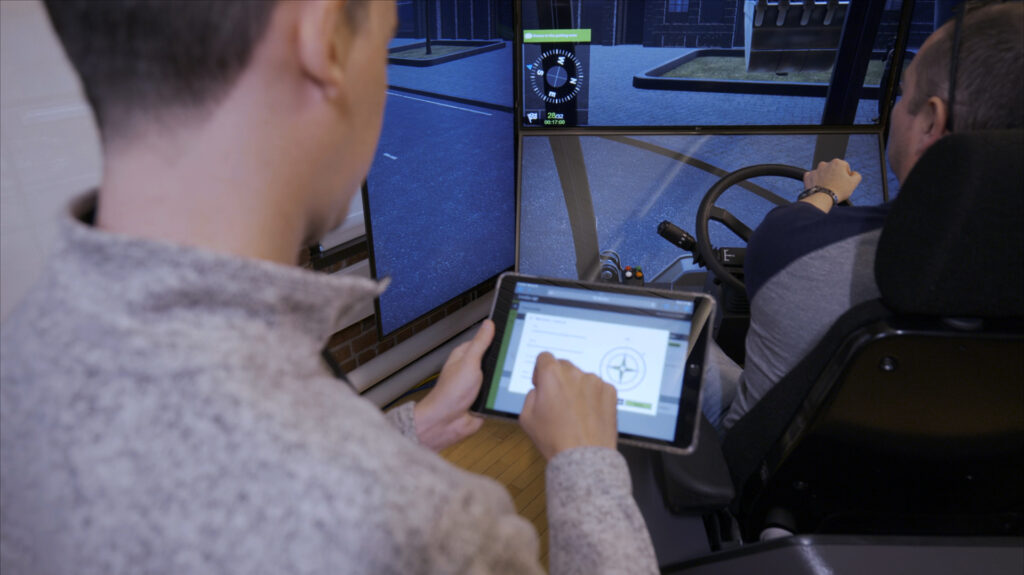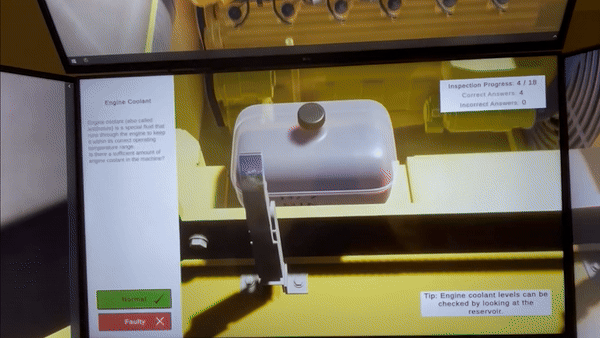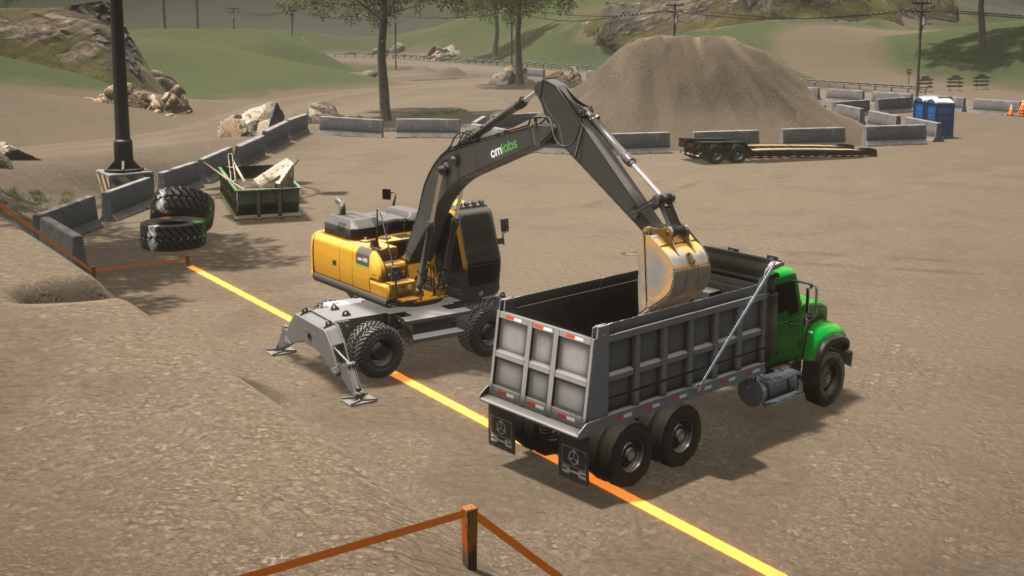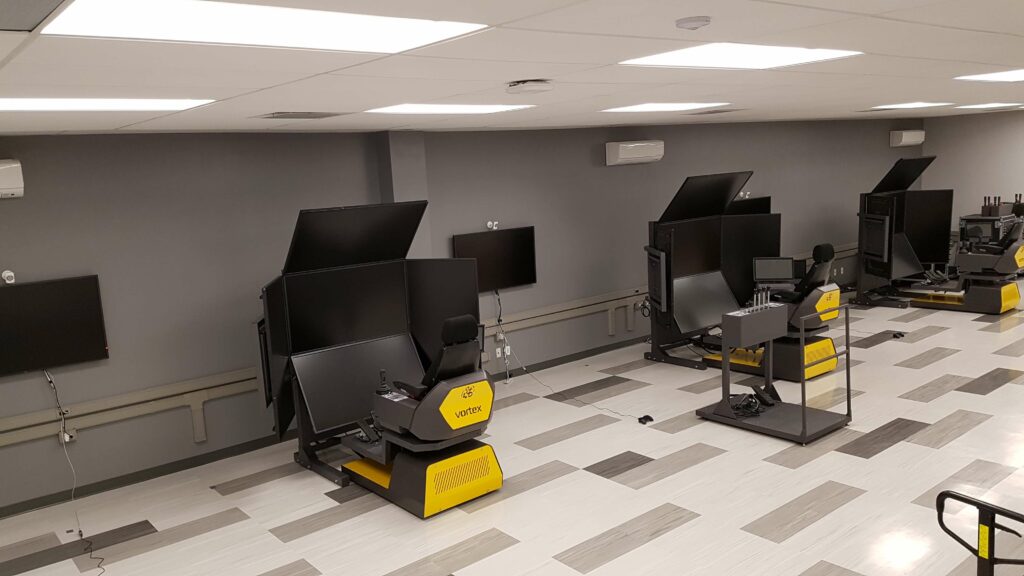Missouri Valley Line Constructors Adopt “Cutting-edge” Vortex Simulators to Standardize Operator Training
Success Story Summary
The Organization
The Situation
The Solution
The Missouri Valley Line Constructors Apprenticeship and Training Program has supplied a steady stream of qualified workers for the electrical industry of the American Midwest since the mid-1960s.
Operating out of seven locations in Iowa, Minnesota, Missouri, Nebraska, North Dakota, South Dakota, and Wisconsin, Missouri Valley Line Constructors has approximately 600 apprentices enrolled in the lineman, traffic signal technician, and substation technician programs at any given time.
“We offer a four year, 7,000-hour apprenticeship program for the power line industry,” said Robbie Foxen, executive director for Missouri Valley Line Constructors Apprenticeship and Training Program. “We start from scratch, teaching apprentices how to climb poles, work on transformers, build high-voltage power lines, and maintain electrical grids.”
The training center owns two digger derrick trucks, a bucket truck, a skid steer loader, and a boom truck.
With dozens of apprentices vying for time on the machines, scheduling was difficult. “We just hoped they got some hours on the equipment,” said Foxen. In order to standardize equipment operator training, as well as expanding seat time for the apprentices, Missouri Valley Line Constructors turned to simulation-based training.
Effective training built on a proven legacy of innovation
As the Apprenticeship and Training Program staff began their search for simulators online, they were soon introduced to CM Labs’ Vortex simulators.
Missouri Valley Line Constructors quickly realized that Vortex simulators were the solution that they needed. “We reached out to CM Labs and took a tour of their facility in Montreal, and got some seat time in the simulators,” Foxen said. “CM Labs is clearly on the cutting edge of simulator-based training.”
Although the city shopped around for different simulators, it quickly settled on the Vortex simulator because of its versatility and the variety of machines that operators could be trained on.
While many operators run the same equipment all year, different seasons may call for different machines. By using one simulator to train on multiple machines, which CM Labs’ system of swappable controls makes possible, the city’s heavy equipment operators gain familiarity with most machines in the fleet.
“CM Labs is clearly on the cutting edge of simulator-based training.”
Indeed, as a company that continually invests in R&D, CM Labs has a proven legacy of innovation. They were the first simulator company to bring engineering-grade simulation to training schools, the first to introduce low-cost motion, and the first to lower training costs with hot-swappable controls.
Missouri Valley Line Constructors purchased two Vortex Advantage simulators for their training centers, with one housed at their main facility in Indianola, Iowa, and the other located at the training center in Stevens Point, Wisconsin.
The Vortex simulators were equipped with backhoe, excavator, rough-terrain crane, and boom truck training packs. “Both simulators have five screens and a full motion package, so the seat moves and vibrates just like when you are running a piece of equipment,” Foxen said. “It feels highly realistic, which helps our students get invested in the scenarios they’re working on. That makes these simulators an extremely effective training tool, as the skills they acquire transfer over to the work site.”
Apprentices in the program spend about one-third of the equipment training time on the simulator and two-thirds on a machine in the field. In addition to field work, apprentices spend about 10 days a year in the classroom, where they now receive roughly 5 additional hours of training on the simulators.
One notable advantage their trainers have found is the simulators can track progress throughout the apprenticeship program. “There are four or five different tasks on each piece of equipment that can be assigned to a student to track their progress,” he said. “You can see the results get better and really assess their progress as they spend more time on both the equipment in the field and the simulator in the classroom.”
“Beyond the 600 apprentices, we have journeymen upgrade classes who get time on the simulator too,” Foxen added. “There are between 200 and 300 other individuals who come in and practice, meaning close to 1,000 different operators each year end up using the simulator.”
From a trainer’s perspective, the simulators allow the apprentice to operate in different scenarios. “It makes them more well-rounded, and it also gets them used to operating different pieces of hydraulic equipment,” Foxen said.
Vortex simulators helping to prepare better qualified operators
Trainers can monitor the student on the simulator both directly, standing next to it or watching from any point in the simulated environment from a CM Labs Instructor Station.
With the ability to introduce challenges, including equipment failure, inclement weather, or different times of day, the Intellia Instructor is a powerful tool that reinforces a high degree of preparedness and attention. Instructors can use the Intellia Instructor Station to track individual performance metrics, and customize scenario scoring in a way that focuses on specific skill development and error avoidance. They can then determine if these errors are common among apprentices and proactively focus on correcting these mistakes.
Training program staff are also seeing an improvement in equipment inspections. “With the Vortex simulators, you can make sure they are doing the walkarounds,” Foxen said. “You can simulate a hydraulic hose breaking on an excavator and see if they address the situation right away.” For contractors looking to hire technicians, apprentices are now better prepared for inspecting and maintaining equipment throughout the day, an additional benefit.
Overall, Vortex simulator training has been a success for the Missouri Valley Line Constructors Apprenticeship and Training Program, and trainees are setting up equipment more quickly than before. “It has added a whole other level to training” Foxen adds. “Apprentices thrive with hands-on training. With the Vortex simulators, they are learning faster, and the program is turning out better qualified operators than ever before.”







